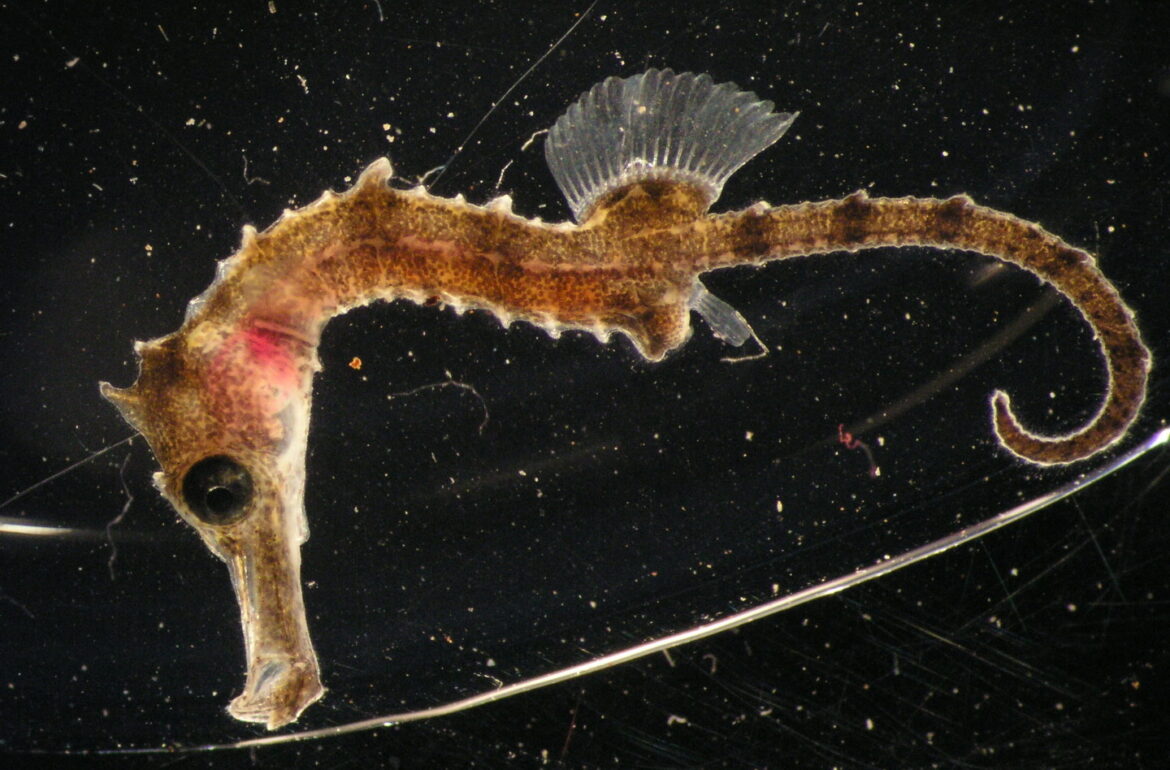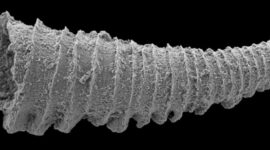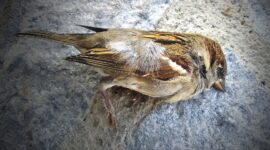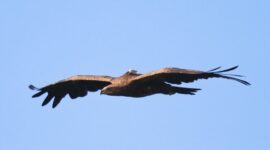Seahorses are wonderful fish. The male fish grows the developing embryos in his pouch with an organ similar to the placenta – studying the pregnancy of seahorses also enables scientists to better understand the adaptive processes of pregnancy in humans. An expert on seahorses from the Canary Islands is working together with the scientists from the University of Tartu.
By the way Francisco Otero-Ferrer introduces the life of seahorses, it is obvious he admires these mystical creatures. And it is not hard to see why – seahorses, such as the short-snouted seahorse (Hippocampus hippocampus) and the longsnout seahorse (Hippocampus reidi), are a group of fish whose characteristic appearance and swimming method cannot go unnoticed. Therefore, seahorses have already been piquing people’s interest for thousands of years, since the times of the ancient Greeks and Romans.
These enchanting animals belong to the Syngnathidae family, together with seadragons and pipefish – the common characteristic within this family is the fused jaw and eating method. With their elongated sucking apparatus, the seahorses pull all kinds of small invertebrates, but also fish and algae – whatever they can manage – into their mouths.
Seahorses are widely spread in various habitats: fields of seagrass, algae-covered and rocky underwater slopes, predominantly in tropical and subtropical seas, but also northwards up to Canada and the waters of the River Thames. Seahorses are terrible swimmers, but excellent at adapting to various living conditions (e.g., in the case there is no seagrass, they can also hold on to fishing nets) and are resilient aquarium fish. The latter is one of the many reasons why seahorses have become the model species for several research topics.
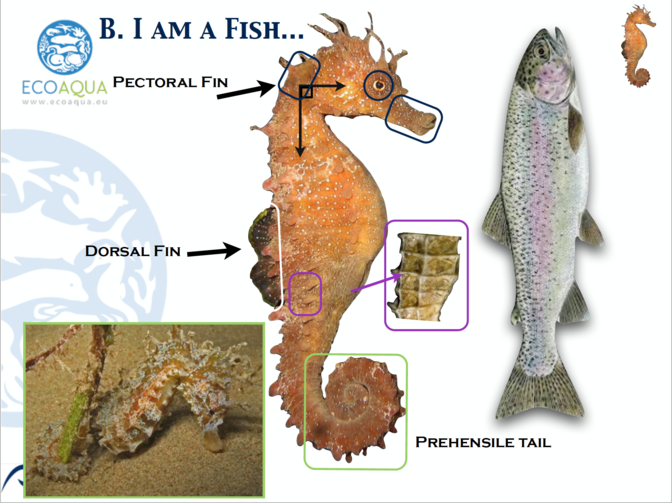
But it’s not all rosy. Due to their appearance, seahorses have found their way to Chinese medicine, they are kept in aquariums, and used as jewellery and souvenirs. Furthermore, seahorses are threatened by several problems related to environmental changes, such as the loss of suitable habitats. Many individuals are taken as by-catch by fishermen during daily fishing. The number of seahorses being sold for various purposes reaches 15 to 20 million per year.
Thus, the abundance of this attractive flagship species has begun to decrease dangerously. For example, in one of the best growing areas for seahorses – the Ria Formosa lagoon in Portugal – where approximately one million seahorses were counted in 2001, there were only 150,000 left in 2019. According to the International Union for Conservation of Nature (IUCN), 14 species out of the 42 are considered to be “threatened” and two “near threatened”.
The seahorse is a species with a unique reproductive biology
The reason why a scientist studying seahorses daily at the University of Las Palmas de Gran Canaria is participating in a joint research project with researchers from the Institute of Biomedicine and Translational Medicine at the University of Tartu is the unique way seahorses reproduce. And this is not that different from humans.
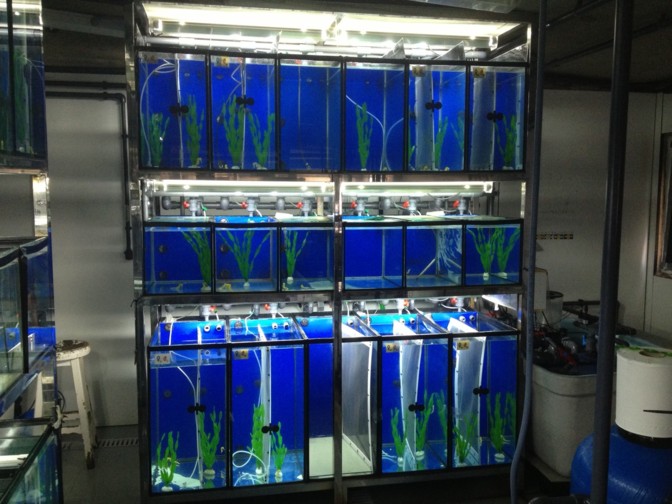
Unlike most fish, which are egg-laying, the monogamous seahorse grows its developing embryos in an abdominal pouch within the body, similar to mammals. Moreover, the embryos are grown by the male. More specifically, the reproduction process takes place as follows: after the male and the female fish mate, the eggs as well as sperms are deposited into the external environment, the seawater. Through water, both reproductive products reach the pouch of the male, where fertilisation takes place. This happens within about ten seconds in total.
When males become pregnant, then why call them males? – because males produce sperm. This unique reproductive mechanism enables males to conserve the amount of sperms produced. The number of sperms per one egg in seahorses is one of the smallest in the animal kingdom, i.e., 2.5:1. In comparison, the zebrafish, which spawn into water, produce 48,000 sperms per egg. At the same time, the ratio of sperms to eggs in the communal ants and bees is similar to seahorses.
How similar are the pouch of seahorses and the uterus of humans? – The seahorse is of course a fish, but there are some similarities. In the pouch of the male individual there is tissue that is similar to the human placenta which forms only for the time of the “pregnancy” and which has indentations for the developing embryos. The male fish can regulate several of the internal conditions of his pouch, such as salinity and pH. Similarly to placenta, the inside of the pouch also has good blood supply, which is regulated by the prolactin and progesterone hormones, just like in mammals.
A doctoral student at the UT Institute of Biomedicine and Translational Medicine, Freddy Lättekivi, explains the evolutionary background of such a unique adaptation: “The pregnancy of mammals and the pregnancy of seahorses (and more generally that of Syngnathidae) have developed during evolution completely separately and independently from each other. It has been thought that the so-called internal pregnancy has developed during evolution independently up to 140 different times. In this context, it is remarkable that the pregnancy of seahorses and humans (mammals) are such similar processes.
It is thought that evolution has independently reached pregnancy so many times because this process greatly increases the likelihood of the survival of the offspring – it helps them better survive the embryonic and early development stages, and in conclusion, makes reproduction more successful. Thereby, the fitness or the reproductive success of these animals increases.
It also seems that the “physical protection” of the development of offspring is not the only feature increasing fitness, it also provides an opportunity for guiding the development of offspring. So, there are mechanisms, which to a large extent have not been described yet, that give input to the embryo about the environment that the parent is sensing.
This process is more generally described by the so-called PAR (predictive adaptive response) hypothesis, according to which the embryo, as a developing organism, tries to “pre-adapt” for independent life and be ready for less-than-ideal conditions. However, if the actual environmental conditions turn out to be something else than what the developing organism prepared itself for, then their preparations become ‘maladaptive’, i.e. they might turn out to be harmful and evoke diseases, because the organism is under constant stress due to the “wrong” environment. This process has mainly been studied in the context of diet, wherein by changing the diet of female individuals in the different stages of pregnancy (and stages preceding it), changes occur in the offspring’s phenotype (external characteristics), which will affect them later in their lives. Without doing experiments, extensive studies have been conducted on this process retroactively in the so-called Dutch Hunger Winter cohort.
Generally, a lot is still unknown about this phenomenon, and the so-called non-genetic or ‘epigenetic’ mechanisms, which still carry information from parent to offspring, is a popular research topic at the moment. The central question in the joint seahorse project has been whether this process also manifests in seahorses, where the males are the ones who are pregnant. What might be the difference between the influence of female and male individuals in this context? Studying these questions may promote general knowledge on the PAR hypothesis and this knowledge may be transferable to humans as well.”
But why use seahorses to study pregnancy? James Ord, a research fellow at the UT Institute of Biomedicine and Translational Medicine, explains some of their advantages in this context: “Although seahorses are much more distantly related to humans than, say, mice, they still offer some neat advantages to study pregnancy. For instance, they reproduce much faster (in fact, the male is ready to conceive another brood immediately after giving birth – he doesn’t get a break!) and in huge numbers – hundreds at a time. Most significantly, perhaps, is the fact that we can study a version of pregnancy which is more or less independent of maternal physiology. As the eggs have come from a different individual to the one carrying out the pregnancy, we can be sure that environmental influences on the offspring have come about due to disruption of the processes in pregnancy, rather than through changes to the eggs.”
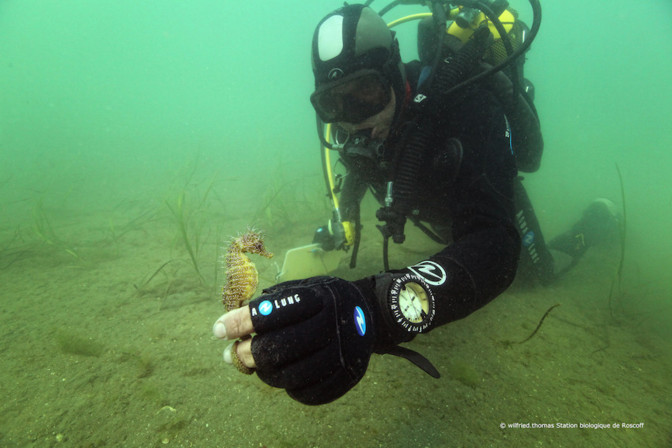
You are what you eat – and so are your offspring
In his earlier research on seahorses, Francisco Otero-Ferrer has also focused on how the food consumed before “pregnancy” and during “pregnancy” affects the quality of seahorse offspring. It is generally accepted that high-quality food is an important factor affecting the development of the foetus also during human pregnancy. Who of us has not heard the saying “You are what you eat!”
In the case of seahorses, the experiment, which studied the effect of male food quality on the offspring, clearly showed that the same applies for their offspring. More specifically, the mouth (its length and shape) of the seahorse offspring which consumed low-quality food during “pregnancy” did not develop to the extent necessary for successfully obtaining food. Try to catch the fast crustaceans when your mouth is short and curved.
Such changes can have far-reaching consequences for the so far commendable adaptability of the species. Low-quality food (e.g., due to decreasing biological diversity) and changes in the shape of the mouth passed on through generations may lead to the extinction of populations under stronger evolutionary pressure.
To really test how sensitive the male’s pregnancy is to dietary quality, Otero-Ferrer and his colleagues asked if even very brief changes in the male’s diet can induce similar changes in the offspring. Working together with the Transgeno Group at the Institute of Biomedicine and Translational Medicine at the University of Tartu, the team found that changes not only in external characteristics, but also in the gene expression of the offspring can be brought about in response to even a few days of low-quality diet during the two-week pregnancy.
“In conclusion,” said Freddy Lattekivi “it might be said that the PAR hypothesis also found confirmation in seahorses, which in turn shows how similar seahorse pregnancy is to its equivalent in mammals.”
Freddy Lattekivi further elaborates on the role of the Transgeno group at the University of Tartu in this collaborative project. “The collaboration in this project was divided in such a way that the gene expression studies and data analysis was conducted at the Institute of Biomedicine and Translational Medicine within the Transgeno project. Research fellow, James Ord, working on the Transgeno project, was the one who turned the results of this large and diverse project into a coherent research article.” The collaborative work was recently published in the Journal of Experimental Biology.
More questions were raised
“It’s like we’ve opened Pandora’s box!”, said Francisco Otero-Ferrer bringing a figurative comparison. “The research done so far has not solved any big issues but created a lot more instead. To exemplify: are male seahorses able to feed the embryos in their pouch similar to mammals? This has been demonstrated in pipefish using stable isotopes, but no one knows whether this occurs in seahorses as well or not.
“Secondly, nobody knows where the fry developing in the pouch get their food from after the yolk sac has been exhausted, but the fry have not left the pouch yet. Does this happen via body fluids in the pouch? The fry exiting the pouch are 0.8–1 cm long and it takes two weeks before they reach this size.”
Even though many additional questions were raised, this does not seem to be discouraging the scientist – such mysteries are what give scientists the greatest pleasure and is the reason why people become scientists in the first place. In addition to reproductive biology, Otero-Ferrer’s plan is to take a closer look at the big picture, the marine ecosystems and habitats more generally, to keep an eye on the changes occurring in the environment. Seahorses do not have grocery stores and high-quality food can only be found in the same natural environment.
Written by Randel Kreitsberg, University of Tartu
References to research:
– Otero-Ferrer, F., Lättekivi, F., Ord, J., Reimann, E., Koks, S., Izquierdo, M., Holt, W.V. and Fazeli, A., 2019. Time-critical influences of gestational diet in a seahorse model of male pregnancy. Journal of Experimental Biology.
– Otero-Ferrer, F., Izquierdo, M., Fazeli, A., Holt, W.V. 2016. Embryonic Developmental Plasticity in the Long-snouted Seahorse (Hippocampus reidi, Ginsburg 1933) in Relation to Parental Preconception Diet. Reprod Fertil Dev. 28(7): 1020–1028.
– Crespi B, Semeniuk C. 2004. Parent-offspring Conflict in the Evolution of Vertebrate Reproductive Mode. Am Nat 163: 635–653.
– Goodwin NB, Dulvy NK, Reynolds JD. 2002. Life History Correlates of the Evolution of Live Bearing in Fishes. Phil Trans R Soc B 357: 259–267.
– Low FM, Gluckman PD, Hanson MA. 2012. Developmental Plasticity, Epigenetics and Human Health. BCM Evol Biol 4: 650–665.
– Fleming TP et. al. 2012. Nutrition of Females During the Peri-conceptional Period and Effects on Foetal Programming and Health of Offspring. Anim Reprod Sci 130: 193–197.
– Schulz LC. 2010. The Dutch Hunger Winter and the Developmental Origins of Health and Disease. PNAS 107: 16757–16758.
TransGeno ERA Chair Project is Funded from the European Union Framework Programme for Research and Innovation, Horizon 2020 (contract No. 6689889).
The translation of this article from Estonian Public Broadcasting science news portal Novaator was funded by the European Regional Development Fund through Estonian Research Council.
 Back
Back